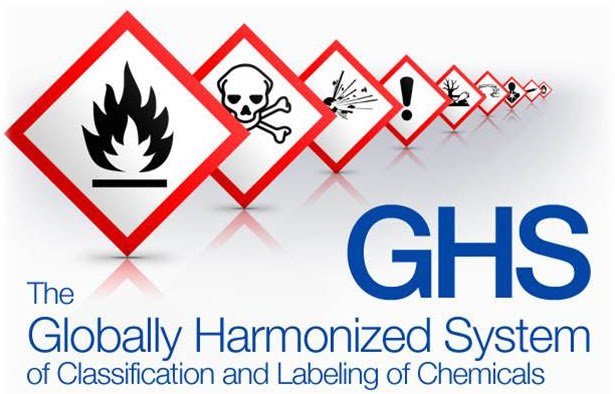Breakdown of GHS Compliance In Canada
As you’re probably aware, like the United States, the Canadian government is making changes to chemical classification and workplace hazard communication to meet the requirements of the Globally Harmonized System (GHS) for the Classification and Labeling of Chemicals. The goal of these changes is to standardize and make international chemical trade more efficient.
The GHS system makes many improvements to the previous WHMIS system:
- Hazard classification criteria are more comprehensive and detailed, providing a higher level of clarity on the severity of hazards
- Identifies hazards not previously addressed, such as Target Organ single exposure and Aspiration
- Consistency with other systems already in use in Canada, i.e. transport
- Specific language and more comprehensible pictograms allowing for better comprehension of hazard information

WHMIS 2015, Canada’s new Hazardous Products Regulation (HPR), was finalized in January, 2015. This repeals and replaces WHMIS 1998, or the Controlled Products Regulations (CPR) and The Ingredient Disclosure List (SOR/88-64). WHMIS 2015 is structured to be similar to the United State’s OSHA HazCom 2012 regulations. However, there are notable differences between the two standards.
It’s important that Canadian chemical suppliers and distributors understand these differences and plan accordingly to meet the standard within the designated timeline.
Key Differences Between Canada’s HPR and the U.S. OSHA HazCom 2012
Due to different constitutional and safety issues in the two countries, there are a few notable differences between Canada’s WHMIS 2015/HPR and U.S. OSHA HazCom 2012 (HCS 2012) that you should be aware of in the Water Treatment product sector:
- HPR retains the requirement to apply for disguise of Confidential Business Information.
- HPR does not allow the use of concentration ranges in Section 3 (composition) of the Safety Data Sheet (SDS), unless the component truly varies from batch to batch. Concentration ranges can no longer be used to disguise formulations.
- HPR includes a requirement for outer packaging to use Globally Harmonized System (GHS) labeling aspects, as well as primary packaging. U.S. HCS 2012 only requires the primary package to use GHS labeling.
- HPR has adopted symbol precedence rules on labeling. These new labeling guidelines align more with the European Union Classification, Labeling, and Packaging regulation. Both HPR and the European regulations regarding symbol precedence differ from the United States.
GHS Compliance Timeline In Canada
With the complexities involved, these changes won’t be implemented overnight. The timeline for the new regulations and GHS compliance takes place over three phases, leading to a completion in 2018:
- Phase one from beginning of rollout until June 1, 2017 requires all manufacturers, importers, distributors and employers to use CPR or HPR requirements.
- Phase two begins on June 1, 2017, ends on June 1, 2018. All manufacturers and importers must use HPR requirements. All distributors and employers may use either CPR or HPR requirements.
- Phase three begins on June 1, 2018 and requires all manufacturers, importers and distributors to use HPR requirements. During this time frame employers may use either CPR or HPR requirements.
- Completion: December 1, 2018 and requires manufacturers, importers, distributors and employees must use HPR requirements. Employers however will be able to use any products that comply with CPR requirements and that are already in the workplace as of December 1, 2018 until June 1, 2019.
With this implementation, expect a more streamlined classification and labeling process for companies doing business in both Canada and the United States of America.



